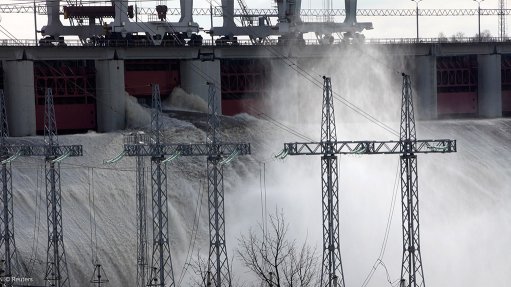Integrated transport: Why it matters and how it can be achieved
This article has been supplied.
By Bongani Mthombeni
No sector exists in isolation — transportation included. How towns, cities and countries move people, goods and services from place to place impacts how they function socially and economically. It affects infrastructure planning, housing development, healthcare, and education. It either frees individuals and communities from poverty or further entrenches them within it, which has a knock-on effect on national economic growth and GDP.
An effective integrated transportation system moves people, goods, and services in an integrated way through roads, non-motorised transport, railways and ports. It means that everyone has several transportation options available to them to get them where they need to be safely and efficiently.
In the Netherlands, for example, residents can choose to drive, walk, or make use of the country’s vast and established cycle lanes. There are also well-running bus, metro, and train networks. And there are seamless links between these systems: bicycle racks are available at stations, and the bus, metro and train lines all intersect at convenient points. Every single mode of transport that is available works together and works well. By extension, almost everyone has access to the broader resources they need. Another great example is the exemplary, intentional and integrated transportation developments in Kigali.
South Africa’s transportation network is not as integrated — either within the different modes of transport it offers, or in terms of its relationship to other sectors.
Why an integrated transportation system matters
Where integrated transportation systems work well, there is always an integrated transportation master plan in place. A living document that consistently addresses the maintenance and upgrade of existing types of transportation and connects the sector into those around it. In addition, it considers new capital projects that will feed into the integrated system. The absence of this plan in South Africa is perhaps the starting point of many of the country’s transportation challenges.
From a policy and planning perspective, South Africa is a deeply siloed nation. Its roads network has its own plan, as do railways and ports. Plans for water and housing are also separate from transport and from each other. And there are variations in approach between local, provincial, and national government. This decentralised, disconnected strategy makes it difficult to gain a holistic perspective, and to introduce interventions that make a meaningful difference.
There are, of course, other challenges besides. Supply chain and procurement, the misappropriation of funds and corruption add to the complexity. Budgets don’t go where they’re meant to go. Maintenance systems regularly falter. Potholes deepen. Compound this with load shedding, urbanisation, and the severe congestion of major cities, and getting people, goods, and services from A to B starts to become a serious problem.
All of this affects people’s mental health and their levels of participation and inclusion. Rural-to-city connections are often hardest hit, and the lack of safety and the inefficiency commuters experience can take its toll on social cohesion. It also impacts businesses’ ability to generate revenue, and makes the economy sluggish. Born out on a national scale, the ramifications of not having an integrated transportation system in place are far-reaching.
A step-by-step solution
So how do we move forward?
The first step is to evaluate the extent of the problem. Without truly knowing how severe it is, we don’t know how to fix it. This involves having accurate and up-to-date Visual Condition Index data on hand — data that offers a detailed picture of the state of South Africa’s transportation network, and where upgrades are required. The Western Cape and Mpumalanga provincial governments are leading the charge here and both have a thorough account of the condition of their roads. But this needs to be a countrywide phenomenon.
Then comes prioritising how budgets get allocated. The roads infrastructure budget is substantial, but it needs to be adequately apportioned — and audited. Work often needs to be split between maintaining existing roads and developing new ones. This is especially so in light of the country’s current railway challenges, which are putting strain on the road network as long-haul trucks move heavy loads long distances.
Step three involves tightening our supply chain processes. At the moment, it takes between six and 18 months for transportation-related tenders to be adjudicated and awarded. These drawn-out and troubled procedures are a breeding ground for corruption and financial misconduct.
Above all, we need a holistic integrated national master plan — a plan that drives consistent evaluation and consistent action. This must start at the top; it begins with leadership. In a democratic country, the master plan should apply no matter which political party or individual is at the helm. And it needs to be comprehensive, with an understanding of the wider forces of which it is a part.
South Africa has a long way to go. But if we prioritise the creation of an integrated transportation system that sees transport as a critical and enabling sector, we can start to shift the needle in other areas, too.
Bongani Mthombeni is the Director of Smart Mobility at Royal HaskoningDHV in South Africa. Royal HaskoningDHV is a B-BBEE Level 1 independent company founded in the Netherlands in 1881, with offices in South Africa since 1922. The company focuses on integrating engineering, design, consultancy, software, and technology to deliver more added value for clients.
Article Enquiry
Email Article
Save Article
Feedback
To advertise email advertising@creamermedia.co.za or click here
Comments
Announcements
What's On
Subscribe to improve your user experience...
Option 1 (equivalent of R125 a month):
Receive a weekly copy of Creamer Media's Engineering News & Mining Weekly magazine
(print copy for those in South Africa and e-magazine for those outside of South Africa)
Receive daily email newsletters
Access to full search results
Access archive of magazine back copies
Access to Projects in Progress
Access to ONE Research Report of your choice in PDF format
Option 2 (equivalent of R375 a month):
All benefits from Option 1
PLUS
Access to Creamer Media's Research Channel Africa for ALL Research Reports, in PDF format, on various industrial and mining sectors
including Electricity; Water; Energy Transition; Hydrogen; Roads, Rail and Ports; Coal; Gold; Platinum; Battery Metals; etc.
Already a subscriber?
Forgotten your password?
Receive weekly copy of Creamer Media's Engineering News & Mining Weekly magazine (print copy for those in South Africa and e-magazine for those outside of South Africa)
➕
Recieve daily email newsletters
➕
Access to full search results
➕
Access archive of magazine back copies
➕
Access to Projects in Progress
➕
Access to ONE Research Report of your choice in PDF format
RESEARCH CHANNEL AFRICA
R4500 (equivalent of R375 a month)
SUBSCRIBEAll benefits from Option 1
➕
Access to Creamer Media's Research Channel Africa for ALL Research Reports on various industrial and mining sectors, in PDF format, including on:
Electricity
➕
Water
➕
Energy Transition
➕
Hydrogen
➕
Roads, Rail and Ports
➕
Coal
➕
Gold
➕
Platinum
➕
Battery Metals
➕
etc.
Receive all benefits from Option 1 or Option 2 delivered to numerous people at your company
➕
Multiple User names and Passwords for simultaneous log-ins
➕
Intranet integration access to all in your organisation





















